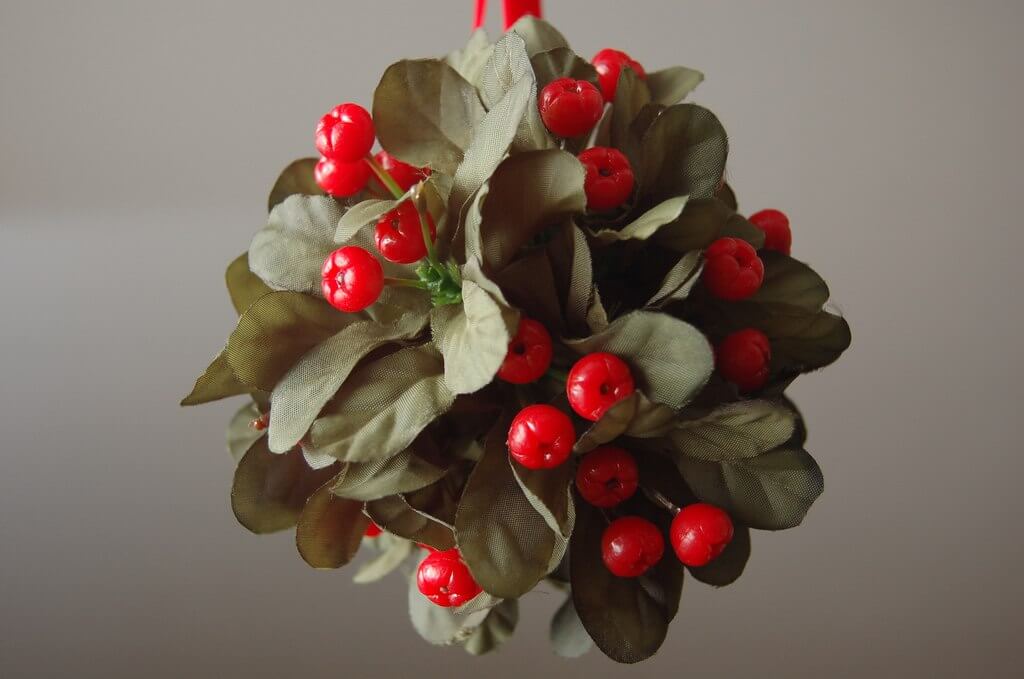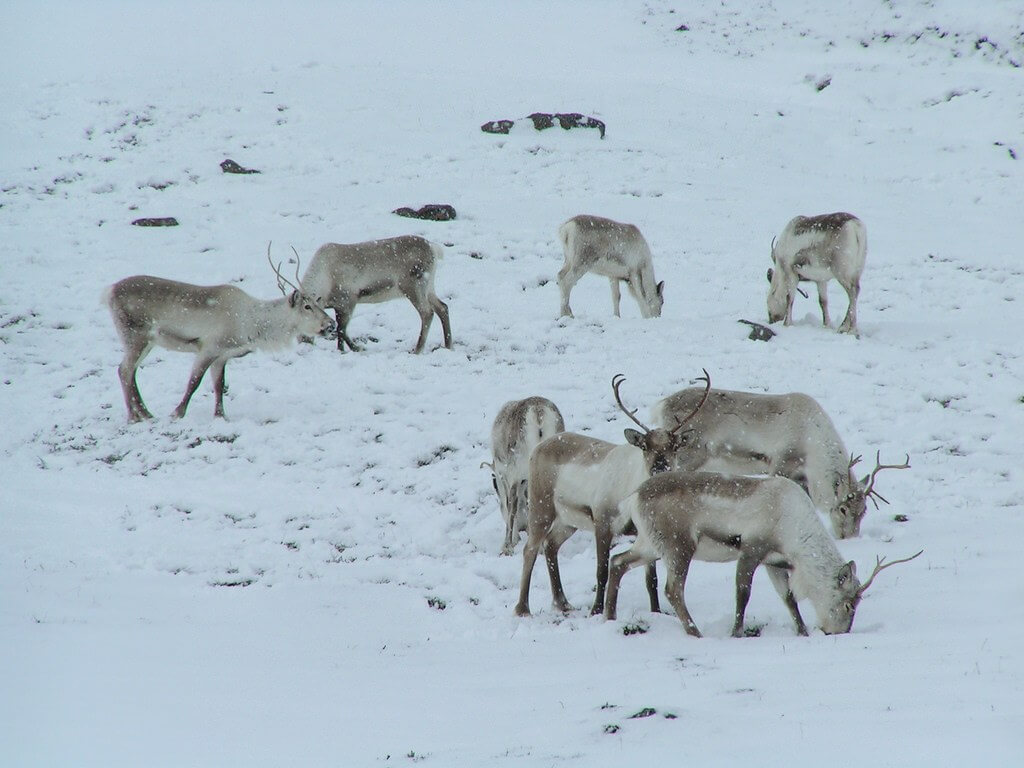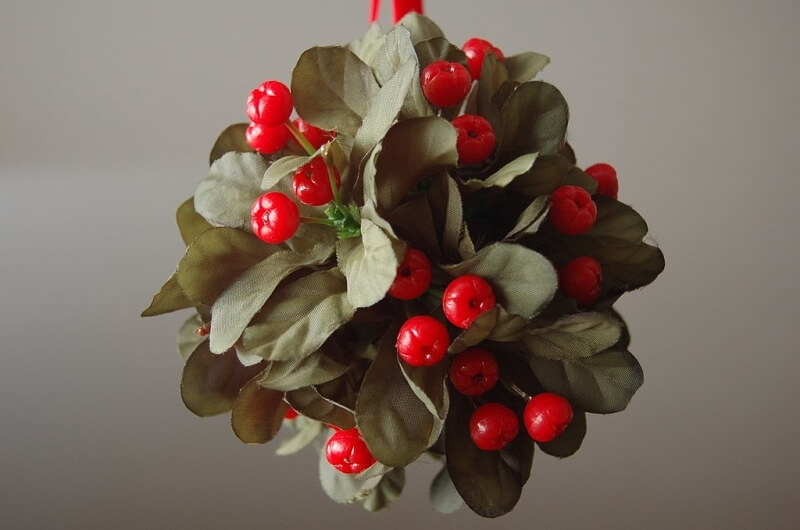Each December, many of us partake in a plethora of holiday traditions, whether we fully understand them or not. Think about it — this is the time of year when the grocery store shelves are packed with things we don’t see the other 11 months out of the year. Why do we see cranberries, eggnog, poinsettias and black-eyed peas all over the store in November and December? Come January, all of those will disappear. It’s just what we do each year, but StyleBlueprint wanted to dig a little deeper into why people do certain things this time of year, from drinking eggnog to kissing under the mistletoe. Here are a few explanations we found after scouring multiple sources on the internet.
5 Holiday Rituals Explained
Mistletoe
What an odd tradition to see a poisonous parasitic twig that’s really only used as decoration during the holiday season, and know that universally it represents a smooch. There’s a good bit of history behind how this came to be, depending on where you look.
In Norse Mythology, an arrow made of mistletoe was used in a murder, and consequently mistletoe became a symbol of peace and friendship. Throughout its history, mistletoe became associated with fertility and vitality and was gradually incorporated into Christmastime celebrations. According to Wikipedia, in 18th century England, the servant class of Victorian England extended the tradition into kissing, which was allowed if standing under mistletoe, and it was bad luck to refuse any kiss offered under mistletoe. In an unrelated trivia tidbit, mistletoe is also the state flower of Oklahoma.

Fruitcake
The most common reference to modern-day fruitcake is that no one actually ever eats it. It gets mailed, re-gifted, packed away and brought out again next Christmas, right? Well, that’s not exactly how it started, but ironically, the origins of fruitcake traditions date back to ancient Rome.
Fruitcake was originally made with seeds, nuts and raisins that were mixed into a barley mash. There are a number of variations on the original recipe, but guess what the American culture added to the mix? You guessed it: sugar. This began the tradition of fruitcake housing candied fruit. Mail-order fruitcakes became popular in America in the early 1900s. During this time, they were loaded with nuts, which is where we derive our saying “nutty as a fruitcake.” Many recipes also have the cakes soaked in liquors or brandy, which is a natural preservative and can keep a fruitcake edible for years. If you are interested in making your own fruitcake, a recipe can be found here.
Reindeer
Actually a species of caribou, reindeer did not fly, nor did they pull Santa’s sleigh until the poem “A Visit from St. Nicholas” was penned in 1823. Better known today as “Twas the Night Before Christmas,” the poem is credited with introducing St. Nicholas arriving via a sleigh being pulled by eight tiny reindeer (complete with names!). Rudolph was not one of the original reindeer, but was later introduced in 1939.
The poem was initially published anonymously by a New York newspaper. Two different writers eventually claimed to be authors of the poem, but each has been disputed throughout history.
So, what has arguably become known as the most recognizable and quotable piece of poetry in American history, set forth a number of urban legends still in effect today. Nobody really knows why the author thought to make reindeer fly. A little too much rum-soaked fruitcake, perhaps?

Eggnog
It doesn’t even sound appetizing, so why do we drink something that is the consistency of cake batter and presumably loaded with raw eggs? It’s become so synonymous with the Christmas holidays that it’s often referred to as “Christmas milk.” And it’s become so engrained into our culture, we can even partake in an eggnog latte, thank you very much Starbucks.
According to delish.com, the reason eggnog is consumed primarily during the holidays is because of a rum scarcity during the American Revolution that caused it to become a “special occasion only” drink.
The origin of the thick, buttery drink dates back to 1775, when the first eggnog recipe (which did include rum!) was recorded.
Food historian Frederick Opie says eggnog has roots in British aristocracy. “In the winter, the wealthy would drink warm milk and egg beverages seasoned with pricey spices, such as ground nutmeg and cinnamon, and expensive liquors like brandy and sherry to keep it from spoiling.”
Although commercially available this time of year, here is a recipe for homemade eggnog if you’d like to give it a shot.
Black-Eyed Peas
Traditionally consumed on New Year’s Day, black-eyed peas have come to symbolize luck and prosperity in the coming year. The origins of this belief, which is most common in the South, are two-fold.
The first urban legend dates back to the Civil War, when black-eyed peas were considered unfit to eat. When Union soldiers raided Confederate food supplies, the story says that everything was taken – except the peas and salted pork. The remaining rations helped the soldiers survive the winter, and as a result, the peas became a symbol of luck.
Another explanation of this superstition is that black-eyed peas were eaten to celebrate the Emancipation Proclamation going into effect on January 1, 1863. Ever since, black-eyed peas have been eaten on the first day of the new year.
According to Southern Living magazine, there is evidence this tradition goes a lot further back than either of these two legends. Apparently, people ate black-eyed peas as early as 500 A.D. as part of Rosh Hashanah, the Jewish New Year.
Whatever your holiday traditions are, enjoy some black-eyed peas, wash them down with a tall glass of eggnog, and cut a slice of delicious fruitcake for dessert. Happy holidays!
**********
Subscribe to StyleBlueprint for your favorite “me moment” of the day.



















